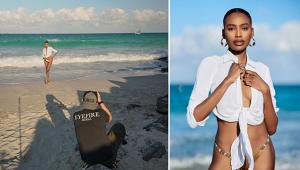Carl Rytterfalk's; Street Portraiture
Swedish photographer Carl Rytterfalk is no stranger to high technology, having been introduced to computers as a child. "I played around with my grandfather's Victor 8086 computer," he explains. "He had a dot matrix printer and I printed endless amounts of Japanese and Chinese ASCII characters." Later, he adds, "My father bought a mouse and I found a small program called Dr. Genius, a very small, simple paint program, and best of all, it worked with my printer." His mother, who was a painter, also encouraged him artistically.
 |
|
|
In Search of a Great Camera
In the early 1990s, Rytterfalk began learning movie-making as an after-school hobby. "My school gave some interested students the opportunity to learn about filmmaking. They had bought some very expensive equipment (to my mind), and some very skilled guys taught us how to do a proper lighting setup, to set white balance and how to edit in the computer. This was a very important time for me, and I still use a lot of what I learned then."
He says that around the mid-'90s, "I started to play with Photoshop, and got pretty good at manipulating images." Rytterfalk got a three-year sales and administration education after high school ("very simple, but it gave me time to do what I wanted after school"). After he graduated, he worked for Tandy's Computer City. Then, after a 10-month stint in the military, he became a manager at another large computer store. He got his first digital camera, an Olympus 1400L, and later upgraded to a compact digital Canon IXUS. "The more I used these cameras, the more involved I got," he states.
 |
 |
||
|
|
He looked for a top-quality digital SLR, one that would produce images that were "more film-like." He recalls, "I saw a lot of resampled versions of pictures, never ones that I thought would look great at full size." He upgraded again to a Hewlett-Packard 912 with a Pentax lens. "This was the first camera that I used to do serious work for local musicians for their posters and CD covers." He eventually taught digital imaging and Photoshop at the high school level, and has worked as a field supervisor with demonstration teams for Hewlett-Packard.
Today, Rytterfalk's photography highlights his ability to make people feel relaxed and natural in his images, and his camera of choice is the Sigma SD9 digital SLR. Back in the year 2000, he learned about Foveon technology, and was impressed by it. When Sigma incorporated Foveon's color-accurate X3 technology into the SD9 in 2002, he bought one, and has been using it ever since. "...I still haven't seen anything that has the overall look that my dear SD9 camera gives me. And to me, that's analog digital," he comments. "The biggest difference in this camera is the Foveon sensor," he maintains. Although the SD9's highest ISO setting is 400, Rytterfalk manipulates his images as high as ISO 800.
 |
|
|
















































